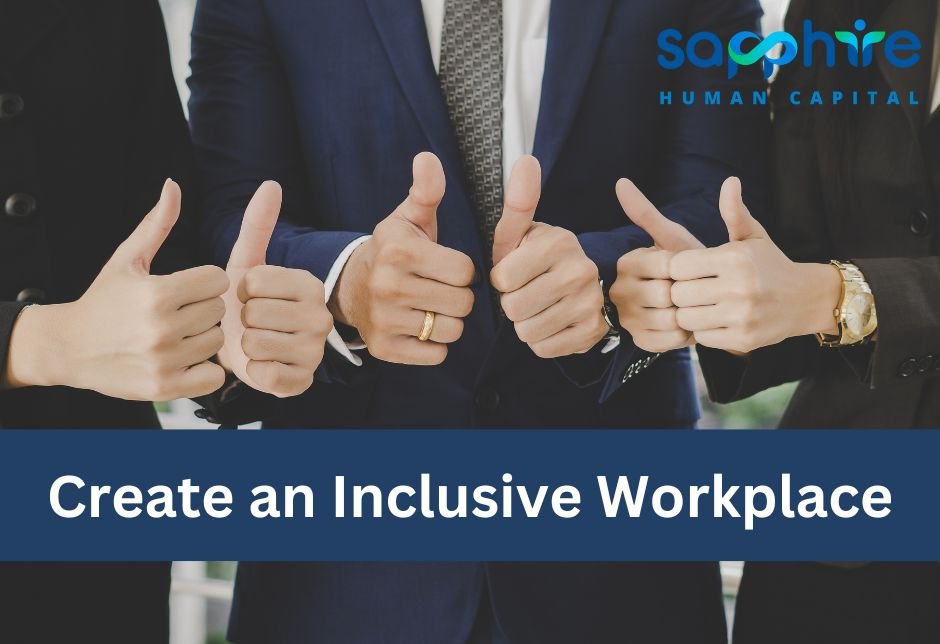The workplace is no longer just a place to earn a living, it’s a community where we spend a significant portion of our lives. A positive and inclusive workplace can significantly impact our overall well-being, job satisfaction, and even our personal relationships.
But what does it mean to have an inclusive workplace? Is it simply about having a diverse team? Or is there something deeper at play?
In this blog, we’ll explore the concept of inclusivity in the workplace regarding diversity and inclusion jobs, and discuss the key factors that contribute to creating a truly welcoming and supportive environment. We’ll delve into the benefits of diversity, the importance of leadership buy-in, and practical strategies for fostering inclusion.
Best Practices to Create an Inclusive Workplace
An inclusive environment fosters innovation, enhances employee engagement, and improves business outcomes. It also ensures opportunities for diverse talent in India. Here are some best practices that organizations can adopt to cultivate inclusivity within their workforce.
Get Buy-In from Leadership
The commitment to inclusivity must start at the top. Leadership plays a crucial role in setting the tone for an inclusive culture. To achieve this, organizations should provide diversity, equity, and inclusion (DEI) training for executives and managers. This training should create a safe space for leaders to discuss challenges and questions regarding inclusivity. When leaders are educated and engaged, they can effectively model inclusive behavior and champion initiatives throughout the organization.
Integrate Inclusivity into Core Values
Diversity and inclusion jobs are crucial to inclusive workplaces and should be woven into the fabric of an organization’s core values. Regularly revisiting these values, especially during times of change, ensures that inclusivity remains a priority. If the current values do not reflect a commitment to an inclusive culture, involve employees in the process of drafting new statements. This collaborative approach not only enriches the values but also fosters a sense of ownership among employees.
Model Inclusive Language
Language shapes culture, and using inclusive language is a powerful way to promote an inclusive workplace. HR professionals and leaders should lead by example, using gender-neutral terms and preferred pronouns in all communications. For instance, using “partner” instead of “husband” or “wife” respects diverse family structures. Training employees on the importance of language can also help to eliminate harmful language and foster a more respectful environment.
Create a Dedicated Inclusion Team
Establishing a dedicated inclusion team composed of diverse leaders can significantly enhance efforts to promote inclusivity. This team should represent various demographics and functions within the organization, ensuring that multiple perspectives are considered in decision-making. Their role includes addressing concerns, reviewing feedback, and implementing strategies that promote inclusivity across the organization.
Foster a Sense of Belonging
Creating a workplace where employees feel they belong is essential for inclusivity. Organizations should prioritize initiatives that promote connection and camaraderie among employees. This can include team-building activities, mentorship programs, and employee resource groups that celebrate different backgrounds and experiences. When employees feel valued and connected, they are more likely to contribute positively to the organization.
Offer Equal Growth Opportunities
To ensure inclusivity, organizations must provide equal opportunities for growth and advancement. This includes transparent promotion processes, access to training and development programs, and mentorship opportunities for all employees, particularly those from underrepresented groups. Regularly reviewing and auditing promotion practices can help identify and eliminate biases that may hinder equitable advancement.
Educate Employees on Diversity and Inclusion
Education is key to fostering an inclusive workplace. Organizations should implement ongoing training programs that educate employees about the benefits of diversity and the importance of inclusivity. This training should not be limited to new hires but should be a continuous effort to reinforce the values of respect and appreciation for all individuals.
Measure and Track Progress
Setting clear goals and metrics for inclusivity initiatives is crucial for accountability. Organizations should conduct regular surveys to assess employee perceptions of inclusivity and identify areas for improvement. By tracking progress over time, organizations can make data-driven decisions to enhance their DEI efforts and ensure that inclusivity remains a priority.
Encourage Open Dialogue
Creating a culture of open dialogue allows employees to voice their concerns and share their experiences. Organizations should establish safe channels for feedback, such as anonymous surveys or suggestion boxes. Regularly scheduled one-on-one meetings between employees and managers can also facilitate open communication, allowing for discussions about inclusivity and individual experiences.
Celebrate Diversity and Inclusion Initiatives
Recognizing and celebrating diversity and inclusion initiatives can reinforce their importance within the organization. This can be achieved through events, workshops, and recognition programs that highlight the contributions of diverse employees. Celebrating milestones and successes in DEI efforts fosters a sense of community and encourages ongoing commitment to inclusivity.
Creating an inclusive workplace is an ongoing journey that requires commitment, collaboration, and continuous improvement. By implementing these best practices, organizations can cultivate an environment where every employee feels valued, respected, and empowered to contribute their unique perspectives. As inclusivity becomes an integral part of the organizational culture, businesses will not only enhance employee satisfaction but also drive innovation and success in an increasingly diverse world.

